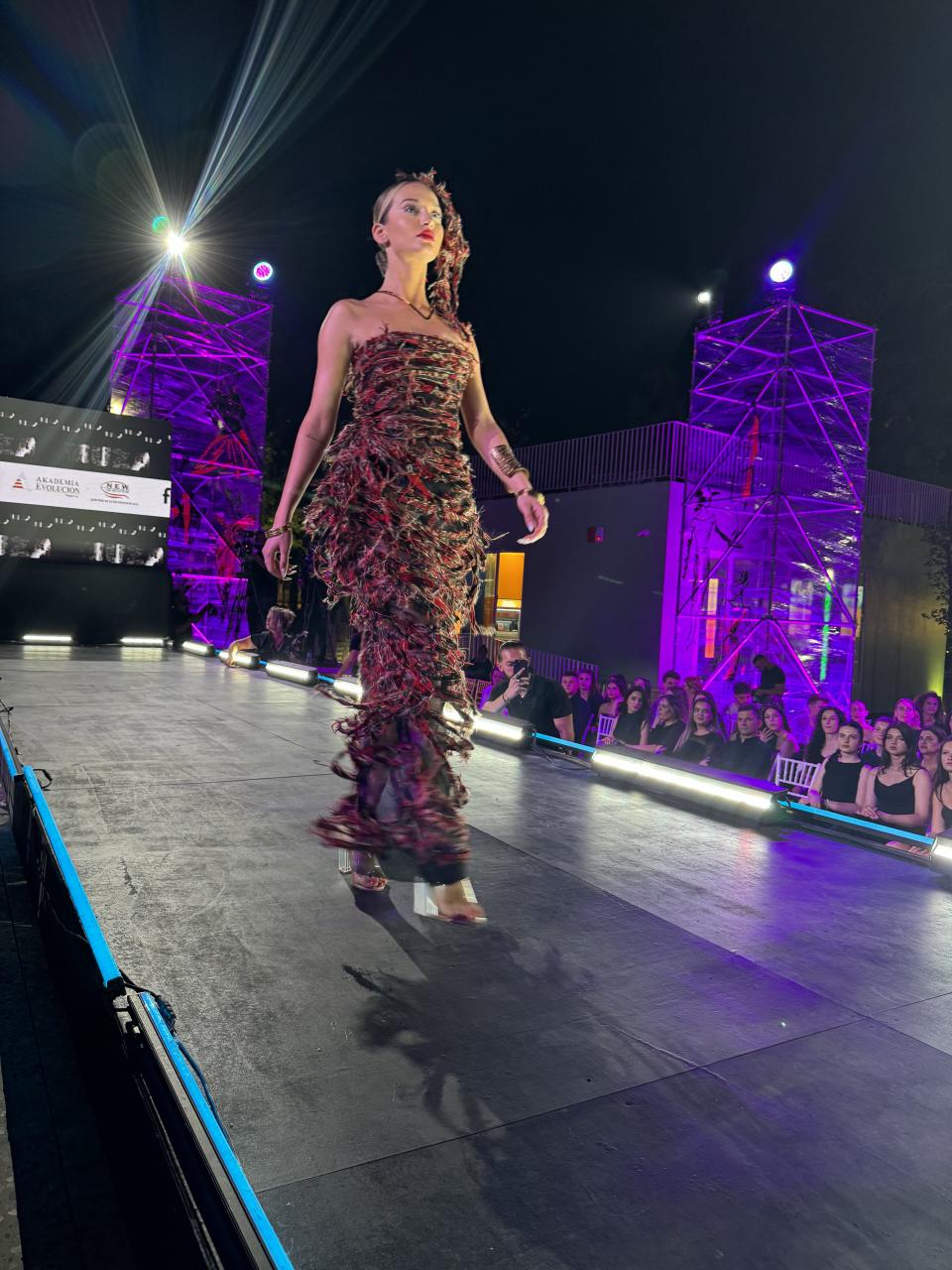Is It Time for an Albanian Fashion Week?

Albania might not be the first country that springs to mind for fashion, but American designer Nicole Miller is a quick convert.
Reached in the country’s capital city of Tirana Friday morning, the designer spoke enthusiastically about the emerging talents who had competed in the 2024 Muza Competition Thursday night. The New York-based creative served as a judge in the event that featured 10 Albanian designers, whose creations had to be based on something traditional in their heritage. These finalists had to have a business to some degree.
More from WWD
Weight Loss Drugs Are Poised to Cost New York City Retail, According to Study
Sarah Paulson, Elle Fanning, Leslie Odom Jr. and More Hit Pebble Bar for Tonys After Party
Having spent part of Thursday perusing tablecloths, felting and qeleshes — brimless white skull caps — at a local bazaar with a local guide, Miller said she could see where the competitors got some of their inspiration. “It was interesting because some of them drew upon their heritage and made it modern, new and forward, and others made it look like ethnic clothing. Everyone did something different,” she said.
How did she wind up there? One of Miller’s former runway models, the Albanian-born Emina Cunmulaj Nazarian, helped organize the event. After living in the U.S. for several years, she decided to move back and became very involved with the community, championing design and “pushing Albania forward. It’s quite remarkable how involved she’s gotten,” Miller said. “She’s in Montenegro for the summer with her kids.”
Designed to raise awareness internationally for young creatives, the event was open to people between the ages of 18 and 35. The Muza Competition’s first prize was awarded to Eljesa Salla, whose runway styles borrowed from more traditional felting techniques. “It was cool how they were taking the traditional and making it modern. Eljesa’s collection was quite edgy,” Miller said.
Second place went to Alejna Quipi, whose designs were inspired in part by Albanian woven rugs. Third place went to Kejsi Ceko, whose “elegant” work encompassed black-and-white combinations and appliqués, drew from handwoven shawls and textiles, Miller said. For first place, Salla earned 20,000 euros, Quipi won 10,000 euros and Ceko took home 5,000 euros. “I must say the show was so professional,” Miller said.

Still relatively nascent, the luxury fashion market in Albania is expected to generate a revenue of nearly $64.5 million this year and its projected compounded annual growth rate is 3.88 percent for the next four years. However, Albania’s luxury fashion market has created a surge in demand for traditional Albanian textiles and craftsmanship, due to local designers like the Muzo finalists, who are playing up their rich cultural heritage through contemporary designs.
Nazarian is keen to have a full-fledged fashion week in Albania, according to Miller, who has met several up-and-coming designers. The Albanian-born Valdrin Sahiti has suited up such celebrities as Beyoncé in the past, including once last summer with a cleavage-baring dress that featured two giant silver seashells.
Miller has also gotten a primer in regional history, having learned such things as the preponderance of Kosovo Albanians, whose primary language is Albanian. More than anything, Miller would like people to know that Albania is a beautiful country with amazing food. “The country has gone through a lot of hardship, as a lot of countries have. But it’s unbelievable what they have gone through,” Miller said.
Albania, the last country in the Balkans to gain independence from the Ottoman Empire, experienced the fall of Communism in 1991 but democracy has had some challenges.
Miller has also been impressed by how industrious Albanian women are including the degree to which they work in Albania’s government. Overall, the female employment rate in Albania is 58.3 percent, which is significantly more than the 2022 world average for women in the workforce of nearly 34.5 percent.
“It’s been a fascinating trip. I’ve gotten a lot of culture and I love shopping in the markets. The people are great,” Miller said. “I have to say the show was very professional. It was in this incredible building called the Pyramid [of Tirana, which was originally built as a museum dedicated to the communist dictator Enver Hoxha and is now a cultural hub].”
Miller added, “There are hardly any buildings that are higher than 10 stories. It’s a very low city, but tall buildings are sprouting up too.”
Best of WWD

